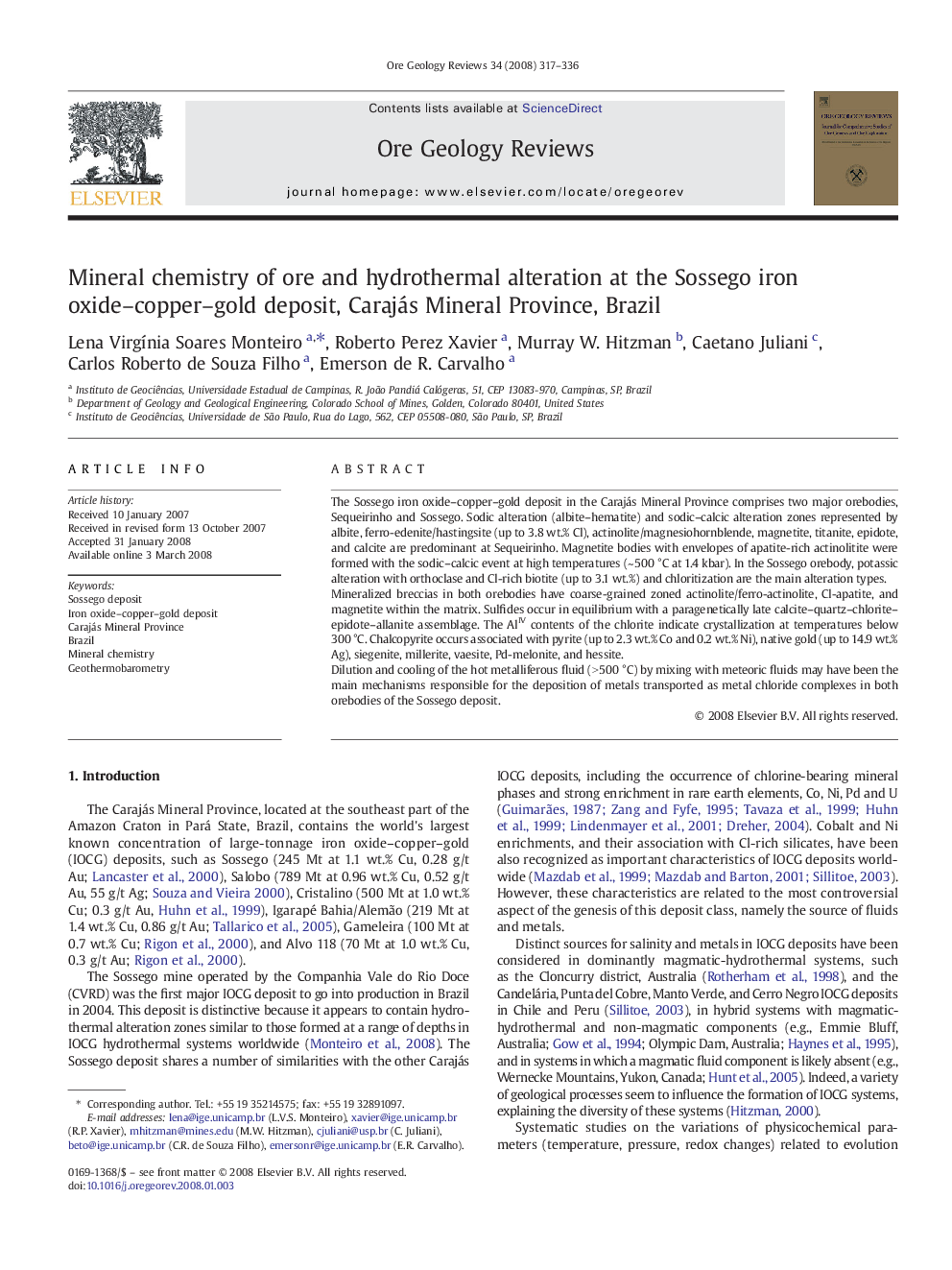| Article ID | Journal | Published Year | Pages | File Type |
|---|---|---|---|---|
| 4697974 | Ore Geology Reviews | 2008 | 20 Pages |
The Sossego iron oxide–copper–gold deposit in the Carajás Mineral Province comprises two major orebodies, Sequeirinho and Sossego. Sodic alteration (albite–hematite) and sodic–calcic alteration zones represented by albite, ferro-edenite/hastingsite (up to 3.8 wt.% Cl), actinolite/magnesiohornblende, magnetite, titanite, epidote, and calcite are predominant at Sequeirinho. Magnetite bodies with envelopes of apatite-rich actinolitite were formed with the sodic–calcic event at high temperatures (~ 500 °C at 1.4 kbar). In the Sossego orebody, potassic alteration with orthoclase and Cl-rich biotite (up to 3.1 wt.%) and chloritization are the main alteration types.Mineralized breccias in both orebodies have coarse-grained zoned actinolite/ferro-actinolite, Cl-apatite, and magnetite within the matrix. Sulfides occur in equilibrium with a paragenetically late calcite–quartz–chlorite–epidote–allanite assemblage. The AlIV contents of the chlorite indicate crystallization at temperatures below 300 °C. Chalcopyrite occurs associated with pyrite (up to 2.3 wt.% Co and 0.2 wt.% Ni), native gold (up to 14.9 wt.% Ag), siegenite, millerite, vaesite, Pd-melonite, and hessite.Dilution and cooling of the hot metalliferous fluid (> 500 °C) by mixing with meteoric fluids may have been the main mechanisms responsible for the deposition of metals transported as metal chloride complexes in both orebodies of the Sossego deposit.
